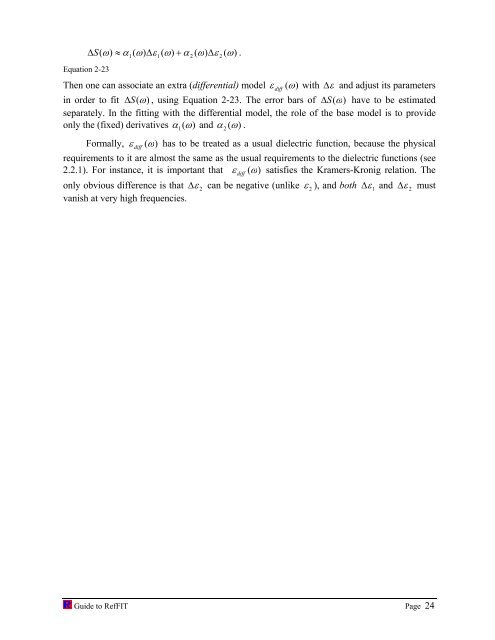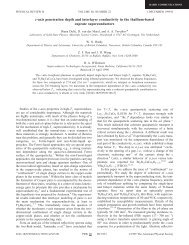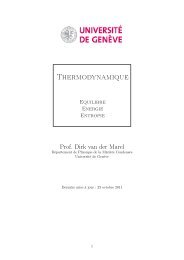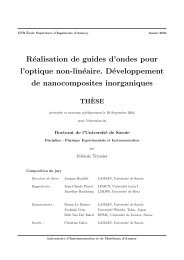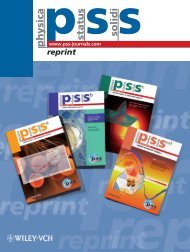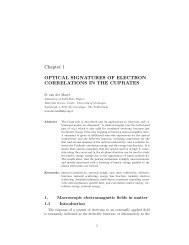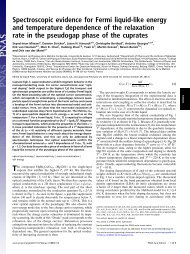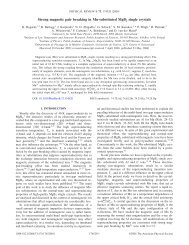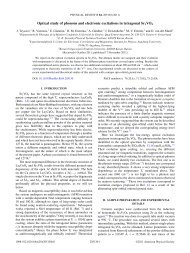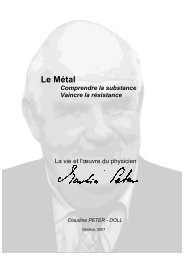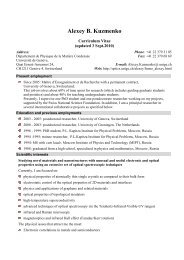software to fit optical spectra - Quantum Materials Group
software to fit optical spectra - Quantum Materials Group
software to fit optical spectra - Quantum Materials Group
You also want an ePaper? Increase the reach of your titles
YUMPU automatically turns print PDFs into web optimized ePapers that Google loves.
∆S ω) ≈ α ( ω)<br />
∆ε<br />
( ω)<br />
+ α ( ω)<br />
∆ε<br />
( ω)<br />
.<br />
Equation 2-23<br />
( 1 1<br />
2 2<br />
Then one can associate an extra (differential) model ε diff (ω)<br />
with ∆ ε and adjust its parameters<br />
in order <strong>to</strong> <strong>fit</strong> ∆ S(ω<br />
) , using Equation 2-23. The error bars of ∆ S(ω<br />
) have <strong>to</strong> be estimated<br />
separately. In the <strong>fit</strong>ting with the differential model, the role of the base model is <strong>to</strong> provide<br />
only the (fixed) derivatives α ( ) and α ( ) .<br />
1 ω<br />
2 ω<br />
Formally, ε diff (ω)<br />
has <strong>to</strong> be treated as a usual dielectric function, because the physical<br />
requirements <strong>to</strong> it are almost the same as the usual requirements <strong>to</strong> the dielectric functions (see<br />
2.2.1). For instance, it is important that ε diff (ω)<br />
satisfies the Kramers-Kronig relation. The<br />
only obvious difference is that ∆ ε 2 can be negative (unlike ε 2 ), and both ∆ ε1<br />
and ∆ ε 2 must<br />
vanish at very high frequencies.<br />
Guide <strong>to</strong> RefFIT Page 24


